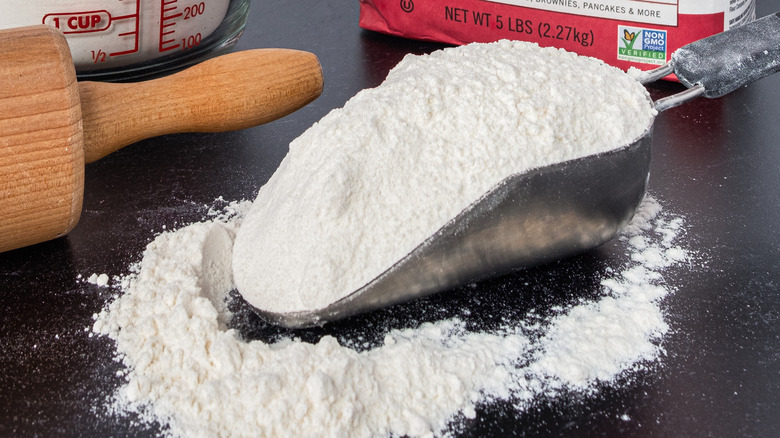A Classic Baking Ingredient Might Be Getting More Expensive (And It's Not Eggs)
It seems that bakers can't catch a break: In 2020, a nationwide yeast shortage resulted in grocery stores being picked clean of all their packets. As a result, some bakers took crash courses on making sourdough starters to enjoy fresh-baked bread at home. In 2022, the price of eggs began to soar to as much as $7 per dozen, and prices were even higher for organic eggs.
In 2023, another critical baking staple might be at risk of price hikes or shortages. According to Food Business News, farmers have sounded the alarm because wheat crops are in danger of under-producing, which will impact the overall supply of flour in the United States.
One of the wheat crops facing the biggest challenge is hard red winter wheat, which is used to make all-purpose flours and cereals. Several states that grow this type of wheat have seen record levels of drought extending into a second year, which has depleted groundwater stores and made it difficult for seeds to germinate. AG Web reported that Kansas was particularly hard hit by drought. As a result, farmers there and in other states face the possibility of low yields or the need to abandon some crops altogether. In conjunction with international wheat shortages due to Russia's invasion of Ukraine, a low supply of U.S. wheat could force shoppers to pay more for flour in 2024.
It's too soon to tell whether you should start stockpiling flour
After reading news of a possible flour price hike, someone's impulse might be to return to the pandemic-era mindset of stockpiling as much of it as possible before the price changes hit. It's a little soon to do that for a few reasons. First, you'd have to do a ridiculous amount of baking to use up a massive amount of flour before it spoils. When stored at room temperature, flour lasts about six months. Cold storage is one of the best ways to store flour, as it'll last longer if kept cold — but that would likely mean having an extra fridge or freezer to hold flour.
Another reason to wait a little longer is that there is still hope that hard red winter wheat crops might rebound. Farmers have their fingers crossed for good spring rains and slow, sustained snowmelt that could coax more crops to maturity. Also, other wheat crops doing well in 2023 could offset shortages, especially if spring-planted varieties thrive. However, wheat crops also depend on precipitation during the 2023 season and drought conditions for the rest of the year.
Producers will be watching 2023's crops closely — as will home and professional bakers — for clues as to what lies ahead for flour availability and cost.

